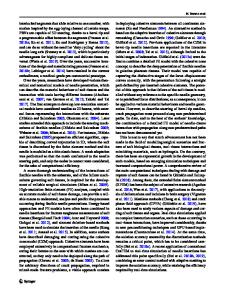A comprehensive finite element model for lithium–oxygen batteries
- PDF / 408,123 Bytes
- 8 Pages / 584.957 x 782.986 pts Page_size
- 2 Downloads / 924 Views
ong the different energy storage technologies under study, lithium–oxygen batteries are one of the most promising due to their great gravimetric energies and capacities 6–10 times greater than other technologies such as conventional lithium-ion cells. The current study provides a comprehensive understanding of how the anodic (e.g., dendrites) and cathodic designs (e.g., porosity of the carbon cathode and mass fraction of oxygen) affect the discharge characteristics of lithium–oxygen cells. When comparing all changes in dendrite surface, porosity and oxygen restriction, it is concluded that although the changes in porosity and oxygen decrease the performance of the cells, the dendrites led to the greatest decrease in performance of the battery when examining the capacity of the cell. This comprehensive understanding will aid in the design of a cyclable and commercially viable lithium–oxygen battery that could be used for a wide range of energy storage applications.
I. INTRODUCTION
As the global demand for energy increases, the need for suitable energy storage devices continues to grow.1–4 Our current energy storage technology of choice is the lithium-ion battery which is commonly found in handheld devices, electric vehicles, and other portable electronics.5 Since the lithium-ion battery was first introduced in the mid-1970s, it has grown to become an extremely popular commercial technology with specific energies of 0.58 kW h/kg and 2.09 kW h/L for the LiFePO4 discharge product.6 While one of the main benefits of a lithium-ion battery is the technology’s maturity and cyclability, lithium–oxygen batteries, also commonly referred to as lithium–air batteries, have received a great deal of attention over the years due to their high theoretical gravimetric energies and energy densities.7–10 These batteries can theoretically supply a car with power and speed characteristics comparable to gasoline. A big reason these lithium–oxygen batteries have such greater theoretical energy densities and gravimetric energies is because they do not require a transport metal (such as cobalt, Co) to bond to the lithium as it travels between the electrodes of the battery.11 Without the need of a heavy transport metal, the gravimetric energies of the battery are increased.11 Lithium–oxygen batteries are composed of three different parts: a pure lithium metal anode, electrolyte, and a cathode. The three components work together to store and release energy through charging and discharging of the battery cell. While the cell discharges, lithium Contributing Editor: Sung-Yoon Chung a) Address all correspondence to this author. e-mail: [email protected] DOI: 10.1557/jmr.2016.306
undergoes an oxidation process, releasing electrons through the circuit and moving to the cathode where the lithium bonds with oxygen to form lithium peroxide (Li2O2). Through charging, a high voltage is applied to the cell leading to a reduction reaction and the lithium bonding again with the lithium metal anode.12–14 Another interesting property of a lithium–oxygen battery
Data Loading...











